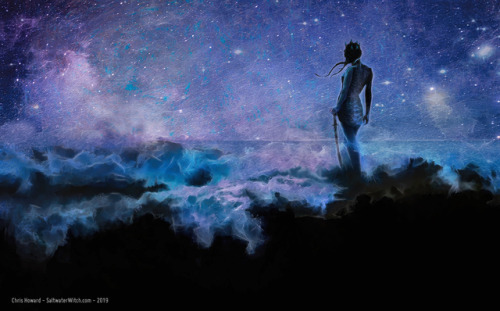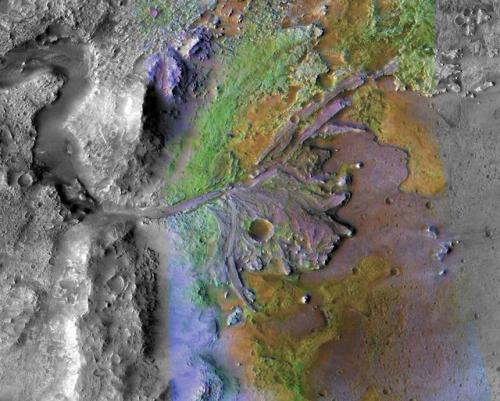Chris Howard's Blog, page 41
June 15, 2019
Jupiter and the Moon through the clouds. Doing some astro stuff...
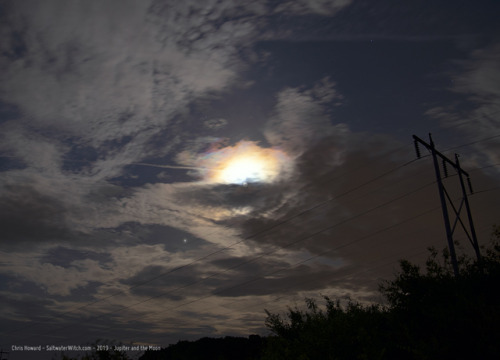
Jupiter and the Moon through the clouds. Doing some astro stuff just wasn’t in the stars tonight, but I did manage to get out and take some pics of our beautiful moon shining through the clouds, along with Jupiter below and to the left. Nikon D750, 4 second exposures.
June 12, 2019
Sharpless 2-101, the Tulip Nebula (top left) is an emission...
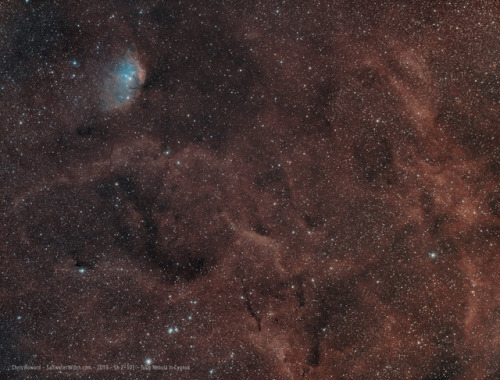
Sharpless 2-101, the Tulip Nebula (top left) is an emission nebula in Cygnus, about 6,000 light-years away. The microquasar Cygnus X-1 is the bright star just above the top point of the Tulip in this image. Cygnus X-1 is famous for being one of the first suspected blackholes, as well as a famous bet between physicists Stephen Hawking and Kip Thorne over that possibility. Hawking conceded to Thorne in 1990 as evidence for a blackhole mounted. Although the Tulip (Sh 2-101) stands out brightly with oxygen in blue, the whole region around the constellation Cygnus is cloudy with interstellar dust and gas. Notes: Astronomik Ha, OIII, and SII filters, William Optics GT81 at f/4.7, ZWO ASI1600MM Pro cooled mono camera, onan iOptron CEM25P mount. More of my astro stuff: https://SaltwaterWitch.com
June 9, 2019
I spent most of last night’s imaging run, about 5.5 hours,...
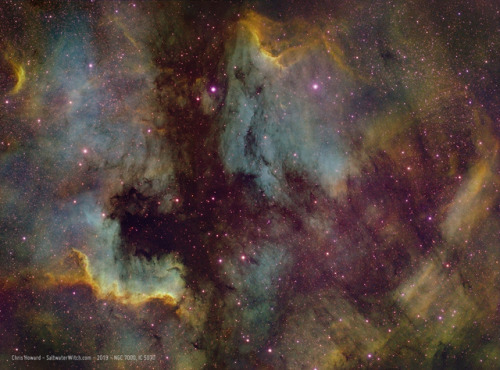
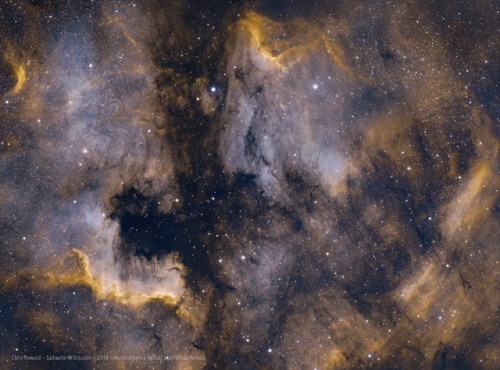
I spent most of last night’s imaging run, about 5.5 hours, on this two-panel mosaic of NGC 7000, the North America Nebula and IC 5070, IC 5067 the Pelican Nebula, both in the constellation Cygnus. NGC7000 and this whole area is one of those deep sky objects with which you can do amazing things in narrowband or broadband color, and turns out beautifully in RGB, bi-color Ha and OIII, even Hydrogen-alpha by itself. For this shot I went with the Hubble Palette in SHO, mapping SII-Ha-OIII to RGB, Sulfur = Red, Hydrogen = Green, Oxygen = Blue. This is why you see aqua and gold standing out in many of the Hubble images. It also affects star color, and you end up with some shade of purple. William Optics GT81 APO Refractor and #ZWO ASI1600MM-Pro mono camera.
The second image is an update to my earlier post with the two-panel mosaic of the North America Nebula (NGC 7000) and Pelican Nebula (IC 5070, IC 5068). I fixed the stars and toned down the whole image
Saltwater Witch Astronomy: https://SaltwaterWitch.com
June 8, 2019
Yesterday I set up for a couple broadband color targets, and...
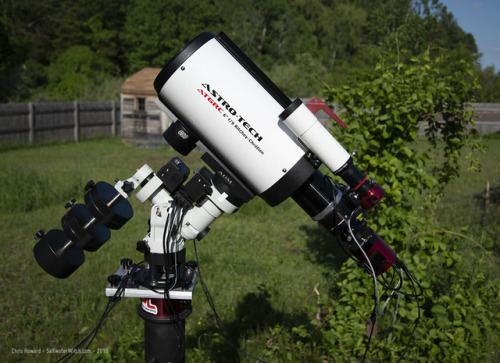
Yesterday I set up for a couple broadband color targets, and went with the Astro-Tech 6" f/9 Ritchey–Chrétien with 1350mm focal length. I paired the RC with the ZWO ASI071MC cooled color camera. And this is the first time I’ll be using the DeepSkyDad Autofocuser AF1, which fits perfectly on the stock Crayford focuser–although you can’t see it in this shot because I have the focus knobs vertical on the right site of the scope. Not using an OAG with this setup, but going with the William Optics 200mm guide scope and ZWO ASI120MM-S mono camera. https://saltwaterwitch.com
June 6, 2019
The complete Veil Nebula in the constellation Cygnus! This is a...
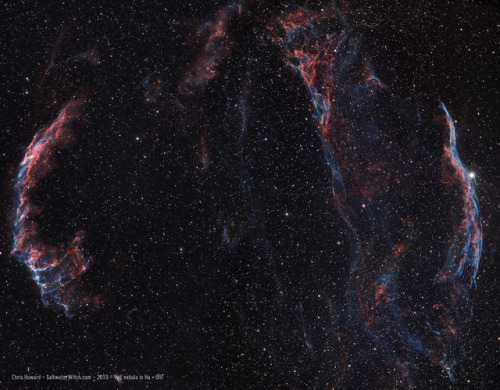
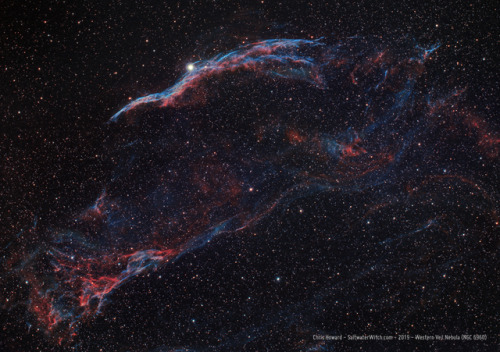
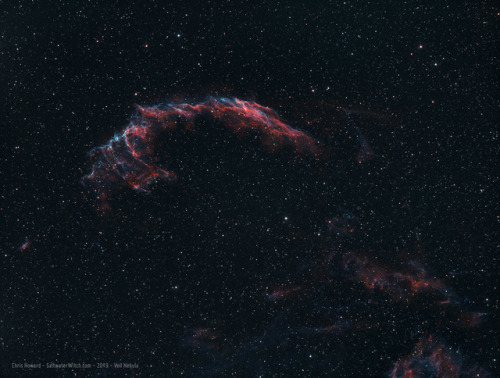
The complete Veil Nebula in the constellation Cygnus! This is a two-image mosaic that covers an area of sky about 3° across, an area into which you can fit 36 full moons. The Western Veil on the right is the “Witch’s Broom” (NGC 6960) and various other bands of ionized gas and dust. Pickering’s Triangle is that brighter wedge-shaped mass of hydrogen and oxygen at the middle top, and the Eastern Veil (NGC 6992, NGC 6995, IC 1340) is the large crescent on the left. The latest estimates put the nebula about 1,470 lightyears away from us. So, relatively close, and if you were around 6,530 years ago–and watching the night sky–you might have seen the massive supernova that created this beautiful nebula. (The supernova kicked off around 8,000 years ago, but the light and violence of the star’s ending would have taken almost 1,500 years to reach us). https://SaltwaterWitch.com
I shot this with a William Optics GT81 APO refractor, on an iOptron CEM25P mount, with Astronomik narrowband filters, and a ZWO ASI1600MM-Pro monochrome camera.
June 5, 2019
Another one from the last imaging run. The star Sadr (gamma...
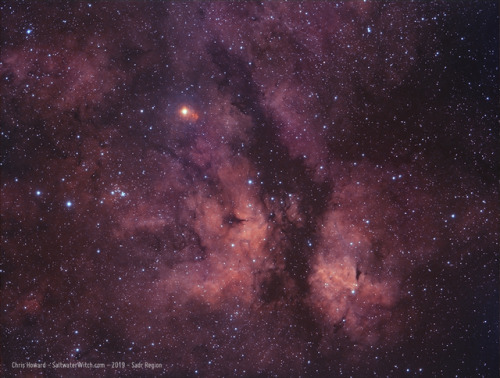
Another one from the last imaging run. The star Sadr (gamma Cygni) is the center point in the Cygnus Cross, and is surrounded by the emission nebula IC 1318. Here’s the Sadr Region in bi-color Hydrogen-alpha and Sulfur2. Ha 12 x 300 second exposures, SII 17 x 300 second exposures. William Optics GT81 APO Refractor, #ZWO ASI1600MM-Pro mono camera.https://SaltwaterWitch.com
June 4, 2019
Last night I came back and captured the Western Veil Nebula with...
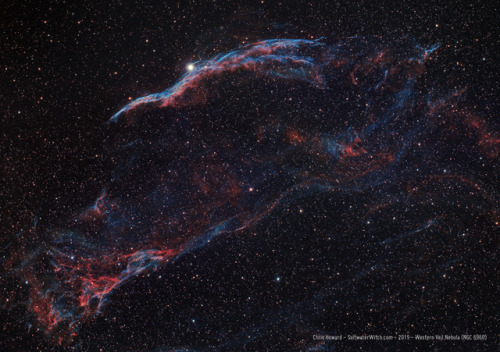
Last night I came back and captured the Western Veil Nebula with its distinctive “Witches Broom” (NGC 6960). William Optics GT81 APO Refractor and ZWO ASI Cameras ASI1600MM-Pro mono camera: 14 x 300 second exp in Ha, 15 x 300 second exposures in OIII. https://SaltwaterWitch.com
June 1, 2019
The Horsehead Nebula (B33) and the emission/reflection nebula...
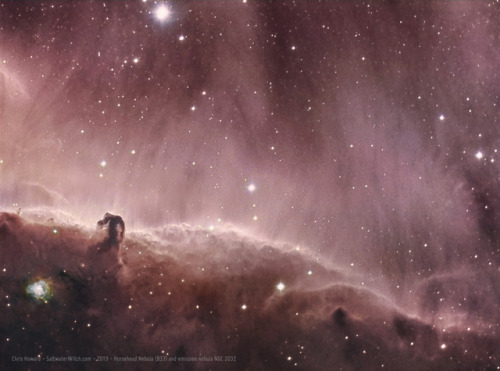
The Horsehead Nebula (B33) and the emission/reflection nebula NGC 2023 (below and left of the Horsehead) in the constellation Orion. With this field of view, you’re looking at around 1.7 trillion miles from one side to the other. I captured a batch of narrowband data in Orion last year. Today, I reprocessed some of it, playing with contrast and color balance.

